In the unforgiving vastness of the Sahara Desert, where the relentless sun and expansive landscape challenge the boundaries of human endurance, one man’s tale of survival is as harrowing as it is intriguing.
Mauro Prosperi, a former police officer from Italy, is a seasoned ultramarathon runner. His hobby saw him enter the Marathon des Sables in 1994, a journey designed to test the strength and fortitude of its participants.
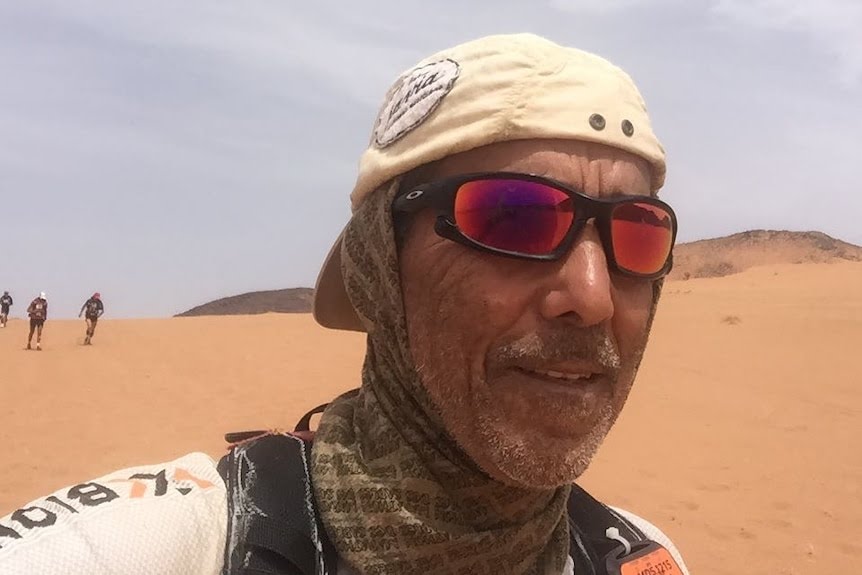

Mauro’s passion for adventure would end up taking him on an unexpected journey for survival through the Moroccan desert.
During this time, he had no food, water, or any idea of which way to head for help. He wandered the vast – and almost inhospitable – desert alone for days on end.
The passionate runner would have his survival skills tested during his journey through the Sahara.
But how did he survive the unsurvivable?
The Marathon Of The Sands
The Marathon des Sables, also known as the Marathon of the Sands, is an annual six-day ultramarathon that takes participants through over 150 miles of scorching Moroccan desert.
Also, those who take part in the marathon – which is six times longer than a regular marathon – are heavily rationed prior to setting off.
The official website for the race describes it as a “self-sufficient adventure,” a promise that they deliver on.
For their whole week in the desert, competitors have to carry all their own equipment and food and are penalized for exceeding their designated rations. They also have a minimum pace of 3 kilometers per hour.
While two miles per hour may not sound overly taxing, when you consider that the Sahara’s terrain – which is roughly the same size as China – consists of uneven sand, salt flats, and gravel plains, the journey becomes all the more difficult.
Then there’s the average temperature of 30°C to factor in, which is exacerbated by the lack of rainfall. Plant life is scarce, so much so that the chance of participants of the marathon encountering any is low.
The barren land is the perfect location for brave individuals to test their endurance and survival skills, which is precisely what Mauro Prosperi was looking to do.
Former Olympic pentathlete Mauro always looked for new ways to test his physical limits. In 1994, he was 39 years old and married with three children, but family life didn’t stop him from pursuing his passion for physical challenges.
Mauro found out about the Marathon des Sables from a friend and fellow athlete, who told him of the extreme and tough conditions the ultramarathon offered.

Without hesitation, the adventure-seeker was in. Straight away, Mauro’s strict training regime began. He ran 25 miles per day and began reducing his intake of water to get used to the lack of fluids he’d have access to.
The demanding routine took up much of his life, with his wife Cinzia rarely seeing her husband while he trained for his upcoming challenge.
The idea of the ultramarathon worried Cinzia. Her nerves weren’t helped by the fact that Mauro had to sign a form before the Marathon des Sables to say where his body ought to be sent in the tragic event he died.
Though the thought terrified her, Mauro tried to put his wife’s concerns at ease by assuring her that the worst thing that would happen to him was getting sunburned.
Little did he know how wrong he would be.
On April 10th, 1994, the trek through the desert began. When Mauro saw the vast dust bowl for the first time, in his own words, he was “bewitched.”
The awe and admiration he felt would soon become a nightmarish experience for him in the unforgiving emptiness of the Sahara.
Swathed By The Sandstorm
The race was popular, attracting an average of 1,300 entrants each year. This meant that participants could find camaraderie and companionship throughout the six-day voyage, though this wasn’t the case for Mauro.
The 1994 race reportedly had less than 100 individuals compete, meaning most people, including Mauro, found themselves alone on their adventure.
Things went smoothly for the first three days of the trek, with day four offering a significant increase in the intensity of the journey. On this day, the participants had to make it 57 miles from one campsite to another.
It’s important to remember the conditions the entrants endured on their journey: the intense heat, the sand dunes they had to traverse, and the lack of resources all contributed to ensuring this excursion was a true test of resilience.
Day four, April 14th, also saw the temperatures rise to 46℃ as Mauro was a third of the way to the next campsite.
Hitting this checkpoint meant he was able to grab his allocated small ration of water before continuing his journey into the vast dune-covered planes.
However, just after midday, extreme winds caused a sandstorm that was bad enough for the marathon organizers to halt the race for that day.
The whirls of sand in the air made it just about impossible for Mauro to see in front of him, and he lost sight of the other participants. While they waited out the storm, Mauro kept running when the dust settled somewhat.
After all, he’d managed to reach seventh place before the winds enveloped him, and he wanted to retain his impressive position.
While he thought he was on the right track toward the checkpoint, he had, in fact, veered off the trail.
By this point, it was just about dark, and it didn’t take long for Mauro to realize his mistake – he had no idea which way to go. Amidst the Sahara dunes, he could not retrace his steps and find his bearings.
The sandstorm had also blown the small but rough grains of sand up his nose, which found their way into his throat, leading to cuts and bleeding.
There was no way to avoid these injuries – he had to breathe, making it impossible not to ingest the particles. The storm had also caused flurries of sand to hit his face, causing a plethora of tiny, sore cuts to his face.
Running On Hope
Mauro did his best to backtrack and make his way to the area where he changed direction, but the darkness ensured there was no way he could see any trail markers.
While the scorching heat had subsided, he had next to no rations left. A tiny allocation of food and an empty water bottle were all that remained.
Instead of walking aimlessly in the desert darkness, he decided to set up camp for the night and recalibrate the following morning. He wrapped a towel around his face to help soothe his stinging cuts and prevent any further injuries.
As soon as the first bit of light appeared in the sky, Mauro set off again. However, things looked bleak; he still had no clue where he was. The dunes all looked the same and unfamiliar at the same time.
At this point, Mauro decided to stop moving and remain in one position. This was the advice the Marathon des Sables offered should a participant get lost.
Rescue efforts are more likely to succeed if the individual remains stationary. So, Mauro sat atop a dune and hoped for rescue.
He didn’t need to wait long before help came. That afternoon, the rescue helicopter flew directly overhead Mauro, and joy set in for him.
It didn’t spot him.
He waited and waited for it to return, but it didn’t. Desperate, Mauro would refer to his map and compass, though both of these navigational tools proved ineffective when he had no points of reference to use them with.
The sun would set, and darkness would arrive again. Mauro decided that he had no option but to go against the advice of remaining stationary, and the following day, he set off walking again.
Miraculously, after a few hours of walking, he saw what appeared to be a structure in the distance. As he got closer, the pentathlete discovered it was a marabout shrine, a final resting place for Islamic holy men.
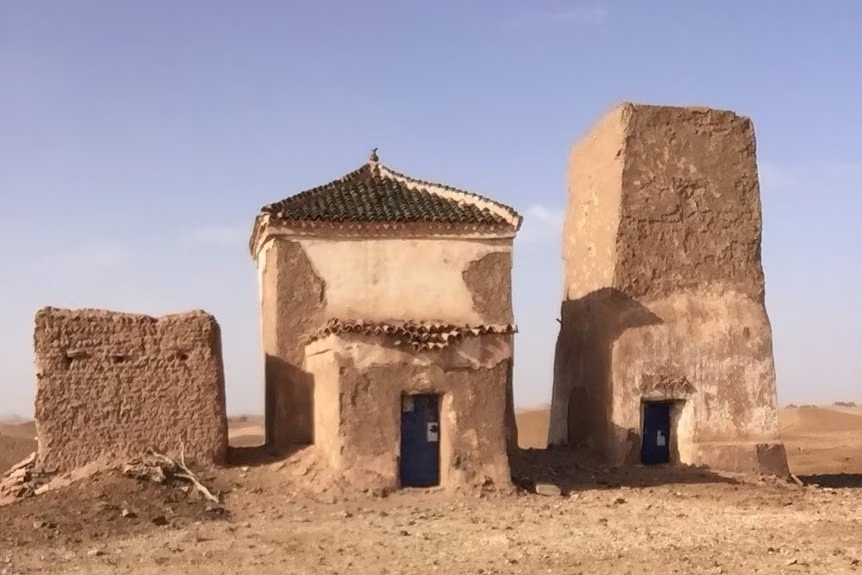
Mauro entered the tomb and found a Muslim man in his coffin. While the dark discovery wasn’t ideal, the shrine did offer Mauro the shelter he desperately needed.
However, he was still in need of food and water. The general rule is that a person can only survive three days without water.
With Mauro training for a lack of hydration before the race, he was able to bypass this point, though his health was in rapid decline.
In a bid to survive, Mauro used the little resources around him to stay alive. He would suck the moisture from the wet wipes he had in his bag. He would seek out morning dew on rocks to lap up.
When these tactics proved fruitless, Mauro had no option but to utilize his urine as a resource. He also bottled some for later.
Drinking your own urine can lead to organ failure, but it offered Mauro a fleeting respite from his severe dehydration.
For food, Mauro took advantage of the bats and lizards that also sought shelter at the marabout shrine. He’d eat them raw and hoped the animal’s blood might offer him some much-needed fluids.
He also managed to find bird’s eggs and insects to consume. This, coupled with the anti-sickness medication he had in his backpack, served to prevent Mauro from succumbing to dehydration and starvation.
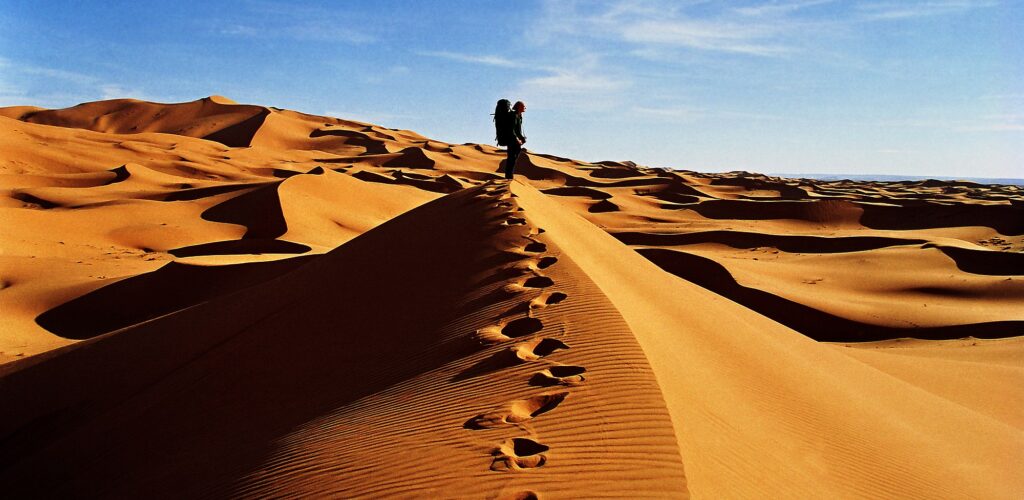
Hope found its way to Mauro yet again in the form of an airplane overhead, and as soon as he heard the engine, he set a fire to attract its attention.
He also carved the letters “SOS” in the hot sand, though in a twist of cruel fate, another sandstorm hit and would sweep it away.
The plane didn’t spot Mauro and passed him before disappearing into the distance. The desperation and despair Mauro felt caused him to consider taking his own life.
He felt that any chance to be rescued had gone and that death was imminent, and it wouldn’t be quick and painless. On top of that, Mauro also considered the impact of his death on his wife.
If he perished in the desert, there was a high chance no one would find him. If this were the case, Cinzia wouldn’t be able to collect his police pension since there would be no way to declare Mauro legally dead.
However, the marabout shrine provided some hope that his body would be found there, meaning his wife and children wouldn’t have to worry about a lack of income.
So, in a bid to prevent a slow and agonizing death, Mauro took his pocket knife out of his rucksack and cut his wrists.
Before doing so, he fixed his small Italian flag to the roof of the shrine, hoping it would help in his body being discovered. Then, he laid down and blacked out.
When he woke the next morning, Mauro discovered that his dehydrated blood had clotted, stopping him from bleeding to death.
The surprise at waking up gave Mauro a renewed sense of fight, and he took it as a sign that his time wasn’t up just yet.
Despite the odds stacked against him, Mauro decided he needed to leave the shrine in order to find safety. Simply awaiting rescue was no longer an option for him since time wasn’t on his side.
Mauro made his way out of the shrine and noticed some mountains in the distance. He decided to head toward them, thinking that the mountains weren’t too far from the Marathon des Sables trail he’d veered off from.
He chose to only travel at dusk and dawn to avoid the desert sun. Unbeknownst to Mauro, he was taking himself further into the barren land.
By now, it was day eight in the desert, and Mauro’s energy was heavily depleted. He would stumble upon plants, which he would pick from the ground and squeeze the roots into his mouth, hoping to get some liquid from them.
Then, miraculously, he found an oasis. He spotted it from afar, water glistening in the distance. At this stage, it was more likely to be a mirage than an actual pool of water, but to Mauro’s delight, it was a real puddle of rainwater.
According to Mauro, he flung himself beside the water and gulped it down. Still, he found it difficult to swallow and discovered that the chugging of the water caused him to bring it straight back up.
He then decided to slowly sip the water, taking a break in between to be sure he could keep it down. This tactic would work, and Mauro got his first real drink in a week.
When he was done, he pulled out his once urine-filled bottle and replenished it with water. Then, he happened upon a sign of life: goat droppings.
A Miracle In The Desert
The droppings would offer Mauro a trail, which he followed, leading him to another trail made out of human footprints. Renewed hope gave him the energy to carry on.
He climbed a hill and stopped atop it, spotting a young girl in the distance tending to animals. She noticed the dirty, disheveled man looking at her and ran away. Mauro called out to her and begged the girl for help.
The child raced to nearby tents, filled with women, to warn them of the man approaching them. The men who lived at the camp had left to go to market, but as soon as the women saw Mauro, they raced to tend to him.
He was given goat’s milk and offered food, which he threw back up. Since Mauro was male, the women wouldn’t let him inside the tents, but they did their best to make him as comfortable as possible outside.
They put him in the shade and laid a carpet for him to rest on.
Local military police were informed of the discovery. Mauro had unknowingly headed over 180 miles away from the marathon trail and ended up in Algeria from his starting point in Morocco.
Algeria-Morocco relations were strained at this time, and Mauro’s venturing between the countries was initially met with suspicion by the police.
However, after discovering he was missing from the ultramarathon, they took him to hospital.
Mauro had received treatment just in time. His liver had just about failed, and his weight had plummeted to 99 pounds.
He was given food, though he was unable to keep solids down, and was given 16 liters of intravenous fluids before being sent back home to Italy, where he was reunited with his family.
Fabrication Or Defying The Odds?
As with all stories that defy the odds, Mauro’s tale of survival was met with skepticism and pessimism. The legitimacy of his story was doubted by fellow adventurers and even the Marathon des Sables founder Patrick Bauer.
Patrick would say Mauro’s story was a “fabrication.” He scoffed at the idea that any human could survive over a week in the desert with little to no resources and supplies. It was a “physiologically impossible” feat that he claimed Mauro was falsifying.
The motive for the exaggerated story was suggested to be money and fame, though Mauro didn’t take these accusations lightly.
In fact, at one point, he considered legal action against his doubters, specifically Patrick Bauer.
It would be easy to disprove if Mauro had inflated or falsified his ordeal. Since he’d told of his failed suicide attempt, he had the scars to show from it, which were clearly visible when he rolled his sleeves up.
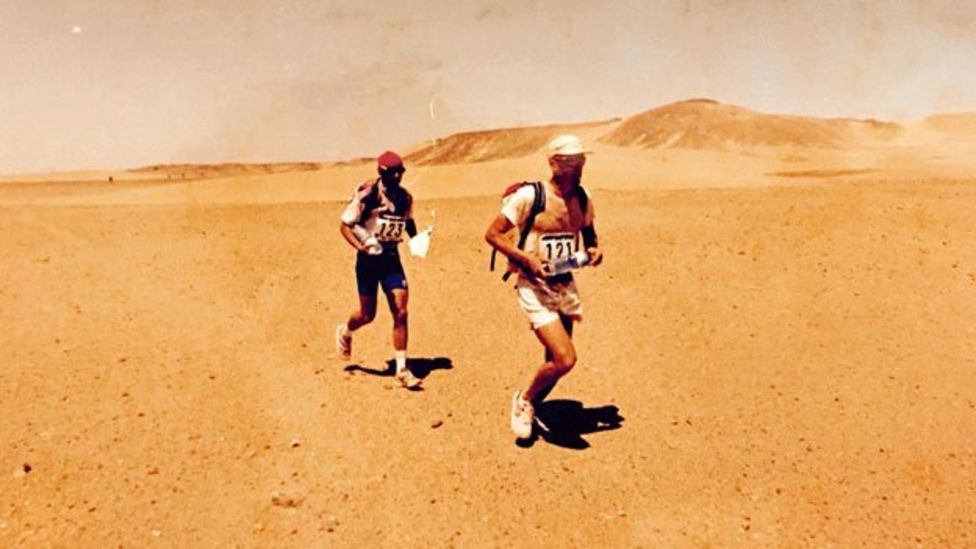
There was also the long-lasting damage his body had taken due to the extreme conditions he’d survived. In fact, he struggled to eat solid foods for a long time after his time in the desert.
He had to eat a liquid-only diet for months after his rescue, with soup becoming his staple meal. Any solids he wanted to consume had to be blended beforehand.
Still, following Mauro’s ordeal, the Marathon des Sables strengthened their regulations for participants to ensure their safety. Entrants are now given a bigger distress flare to use if they lose their way.
A year after his ordeal, documentary makers made their way to the marabout shrine where Mauro had claimed to have eaten bats and saw a dead man in a coffin.
Sure enough, the documentary team found a pile of bat skeletons and the body in the coffin, just like Mauro had said there would be. Some of Mauro’s belongings were also scattered in the shrine, further verifying his version of events.
Beyond The Dunes
Four years after his rescue, Mauro returned to the Sahara and took part in the Marathon des Sables for a second time.
Instead of being fearful or apprehensive about taking part in the very marathon that almost took his life, Mauro felt compelled to finish what he’d begun in 1994.
He says he has a disease – “desert fever.”
Since his near-death experience in the Sahara, Mauro’s love for the desert hasn’t quelled. If anything, his adoration for the dry wilderness has increased.
He’s run several more desert marathons and returned to the Marathon Des Sables five more times over the years, coming in 13th place in 2001.
However, Mauro’s passion for nature and sports would end up causing his marriage to break down. His lifestyle and constant time away from home saw the couple split, although there was no animosity between the pair.
In fact, after the divorce, Mauro states that he and Cinzia are best friends and are even closer than they were when they were married.
In 2020, they co-authored a book together titled Those 10 Days Beyond Life, detailing his brush with death and survival against the odds.
Mauro admits he won’t change for anyone and certainly won’t be giving up his beloved marathons any time soon. At almost 70 years old, the athlete is still racing and testing his endurance. “I’m a man on a mission,” he says.
Sources
https://www.marathondessables.com/en/marathon-des-sables/race-story
https://www.bbc.co.uk/news/magazine-30046426
https://www.globaladventurechallenges.com/journal/facts-about-sahara-desert
https://www.marathondessables.com/en/marathon-des-sables/concept
https://bushcraftbuddy.com/mauro-prosperi/embed/#?secret=l9ZukoPEkV#?secret=eolxUlHD3G

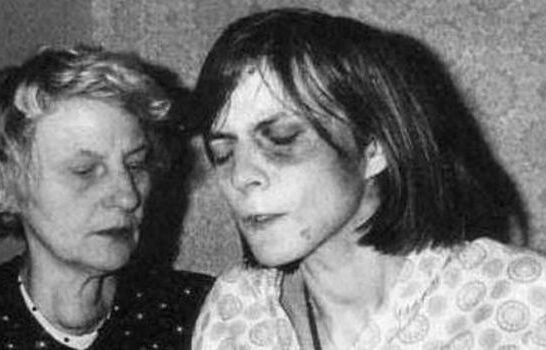
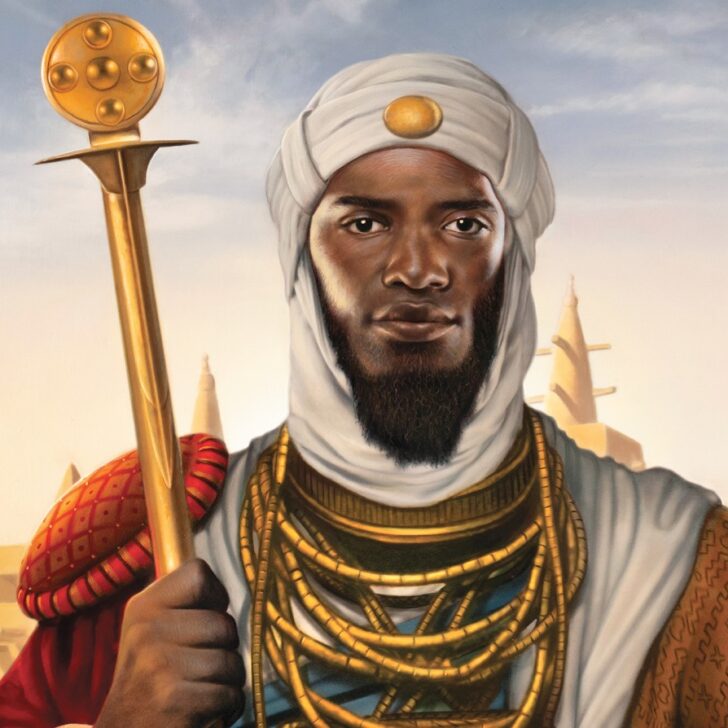
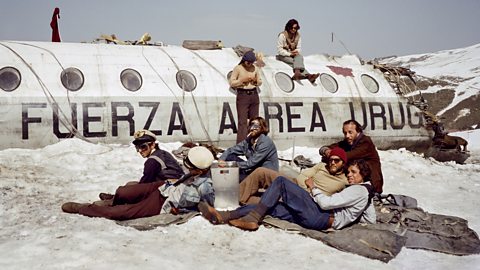
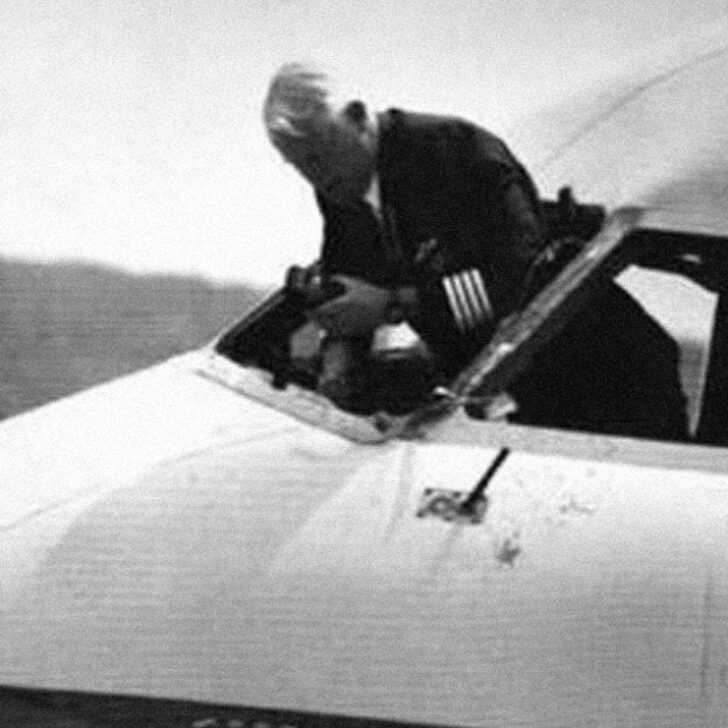

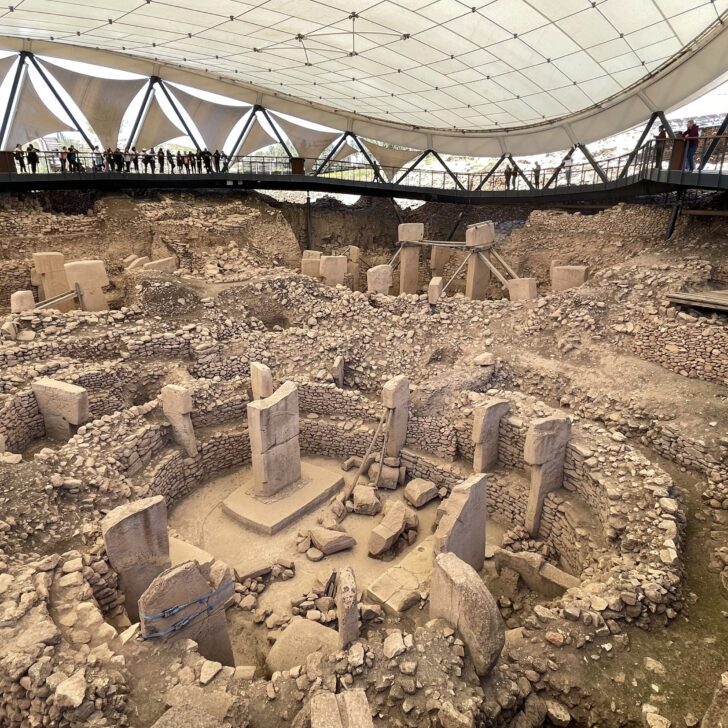





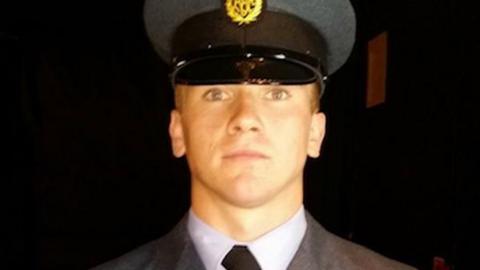
Leave a comment